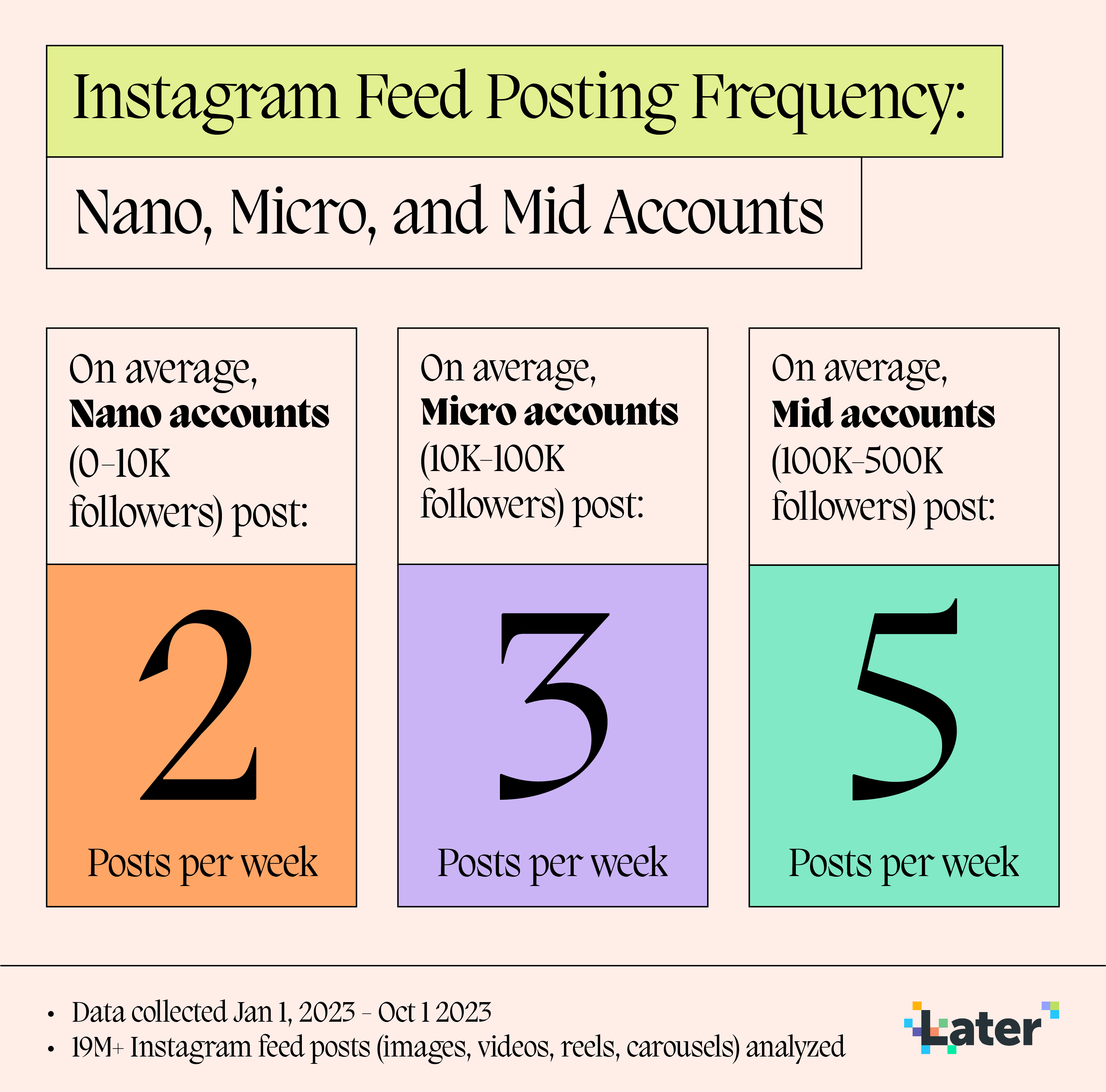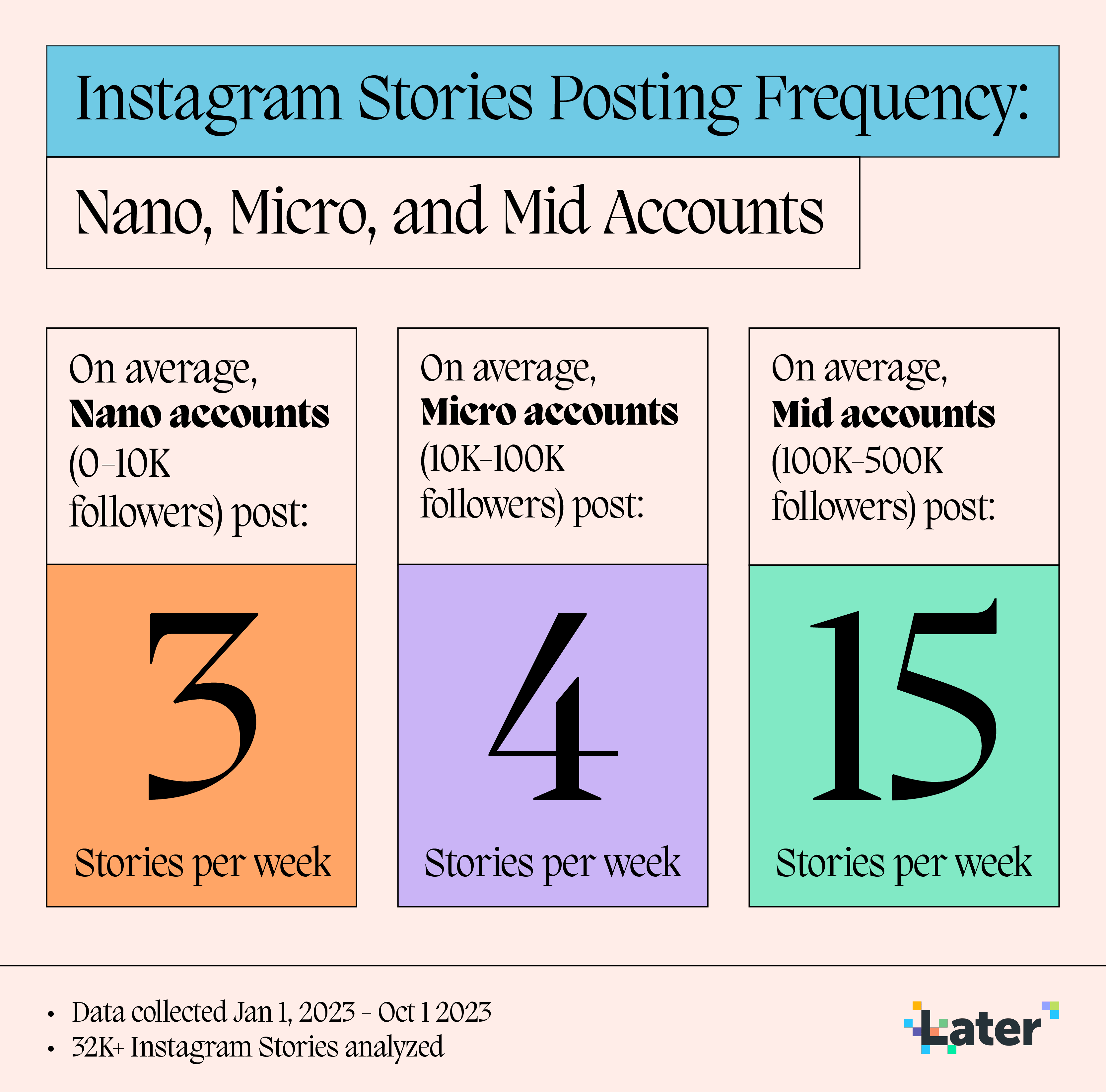How Often You Should Post on Instagram

How often should you post to Instagram every week?
It’s a question that elicits a lot of opinions from social media managers, creators, and solopreneurs alike.cSo, as a leading social media management platform, we took matters (AKA data!) into our own hands and analyzed over 19M Instagram feed posts and 32K Instagram Stories to determine the average posting cadence. Here’s what we found:
Does Posting Frequency on Instagram Really Matter?
Short answer: yes.
While “consistency” is the buzzword du jour, being consistent on Instagram is a great way to grow on the app.
“The more consistent you are, the more your community will get to know you — which in turn builds trust and gives them a reason to engage with your content,” says Later’s Social Media Manager, Christine Colling.
That said, it has to be manageable.
“Set your own pace and create a reasonable content calendar — it doesn’t have to mean posting every single day,” adds Christine.
Our advice? While posting consistently matters, it’s more important to:
- Define (and revisit) your social strategy and goals
- Determine a posting cadence that’s achievable (and adjust as needed)
- Experiment with different post types (an Instagram Reel can be great for reach whereas Instagram Stories can help drive traffic)
- Frequently analyze your content’s performance to see what’s working (and double-down on it)
How Often Should You Post Instagram Feed Posts in 2024?
After analyzing over 19M Instagram feed posts (images, carousels, videos, and Reels) from January 1, 2023 to October 1, 2023, we found that users with:
- Nano accounts (0-10K followers) post an average of 2 feed posts per week
- Micro accounts (10K-100K followers) post an average of 3 feed posts per week
- Mid accounts (100K-500K followers) post an average of 5 feed posts per week

As for Later’s social team? With over 520K Instagram followers, we post an average of 12 feed posts a week.
Keep in mind that we have a team of three, along with support from our creative team to design assets (including templates).
Data Analysis — Key Takeaways:
- As accounts gain followers, they begin to post more — likely due to:
- Increased interest in their content
- More resources and the ability to outsource work
- Rather than posting multiple times a day, there’s been a shift towards “quality over quantity” — likely due to conversations around social media burnout
- Take these numbers with a grain of salt — posting frequency can change depending on seasonality (aka posting more in spring), a campaign or launch, and after analyzing content performance
How Often Should You Post Instagram Stories in 2024?
After analyzing over 32K Instagram Stories from January 1, 2023 to October 1, 2023, we found that users with:
- Nano accounts (0-10K followers) post an average of 3 Instagram Stories per week
- Micro accounts (10K-100K followers) post an average of 4 Instagram Stories per week
- Mid accounts (100K-500K followers) post an average of 15 Instagram Stories per week

Data Analysis — Key Takeaways:
- Accounts post more Story than feed content — a trend acknowledged by Instagram’s CEO, which has led to the app rolling out new features like Close Friends for feed posts
- There isn’t much difference between Nano and Micro posting cadence — pointing to a potential “slow and steady” approach as they get into the habit of posting consistently
- Once an account passes 100K followers, there’s a drastic increase in Instagram Story content. We hypothesize this happens for a few reasons:
- Doubling-down on community-building
- More efforts to drive clicks via the link sticker
- More resources and bandwidth
So, How Often Should You Really Post a Week on Instagram in 2024?
If you’re starting a new account, posting a few feed posts and Stories a week is always a good idea. And as you get more followers, consider increasing your posting cadence (and resources!) to keep your community engaged. But most importantly, try not to get too caught up in the numbers— creating quality content trumps quantity. Instead, use this data as a starting point to gather insights and experiment with your own account to find what works best.
Source: Later